A dark room full of wondrous white objects – the first impression in the new special exhibition at the Museum Mensch und Natur is that of an art show. In fact, they are wonders of nature that are presented here: skeletons, from the tiny Etruscan shrew to the mighty hippopotamus, from the sailfish to the rattlesnake to the barn owl.
In art, bones and skulls are symbols of death. Here they bear witness to the almost endless diversity of life on earth. There is no other object in which evolution can be studied so vividly. But the exhibition offers much more inspiration – from the aircraft part that was designed based on nature to the question of why sport is so important in old age.
Running, climbing, jumping, swimming – humans and animals can only do this thanks to their movable bones. And even if the skeletons of mammals, fish and birds are similar because they all have the same evolutionary origins, it is their specific characteristics that enable each individual species to achieve its achievements.
There is the cat’s hump, extremely mobile, no bones break easily even if you fall. The owl can rotate its head almost 360 degrees. Or the sloth: Thanks to its interlocked bones, it hangs in the tree for hours without any effort. The brown rat, spread all over the world by humans, balances on any surface. The giraffe can eat from treetops thanks to its extremely long vertebrae. The whale, on the other hand, must not have a long neck; it would only become dislocated under the pressure of the water.
Cats in action: The vertebrae are extremely flexible, an advantage when humping or playing.
(Photo: Catherina Hess)
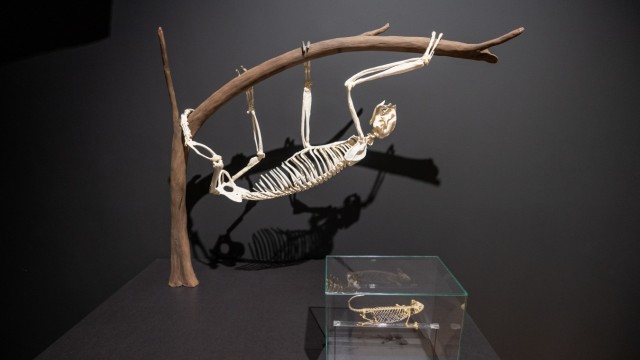
The sloth hangs in the tree without any effort.
(Photo: Catherina Hess)
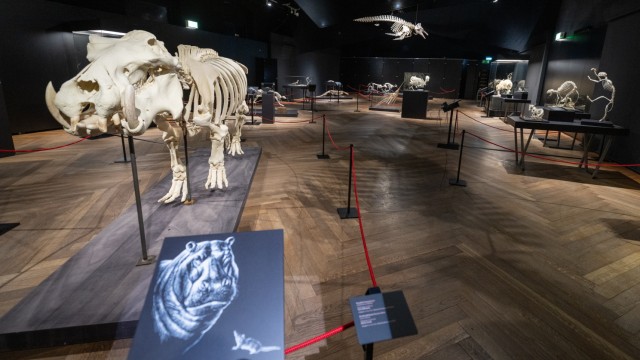
The hippopotamus needs heavy bones in the water.
(Photo: Catherina Hess)
You can learn how all this developed from individual examples. For this purpose, exhibits were borrowed from the Bavarian State Natural Science Collections and from numerous other European collections. The hippopotamus that greets visitors as they enter is on loan from the Natural History Museum in Berlin. The colossus was transported as a whole and hoisted to the first floor of the museum using a specially rented crane, explains museum director Michael Apel. And, because this question comes up again and again: No living being is killed for museum purposes. Rather, zoos usually offer a dead animal to science.
The special exhibition includes two large rooms, a total of 400 square meters, on the upper floor of the museum. She avoids long text panels. In fact, there are always listening stations where the most important contexts are explained in German and English. You can use a QR code to download the file onto your smartphone – also in sign language for deaf visitors. Films with X-ray images of the movement patterns of individual skeletons play on the ceiling, a nice complement to the static bones on the floor.
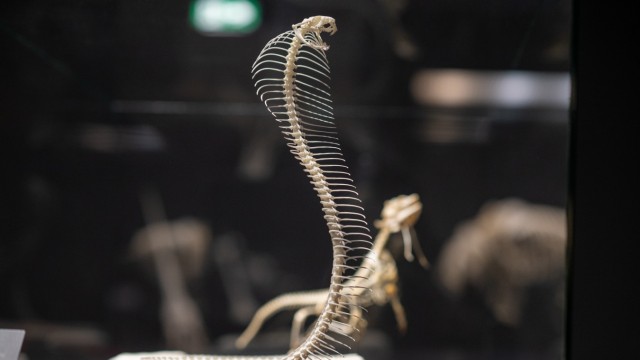
Here, visitors don’t have to be frightened by snake skeletons.
(Photo: Catherina Hess)

In the first room you immerse yourself in a chamber of wonders of nature.
(Photo: Catherina Hess)
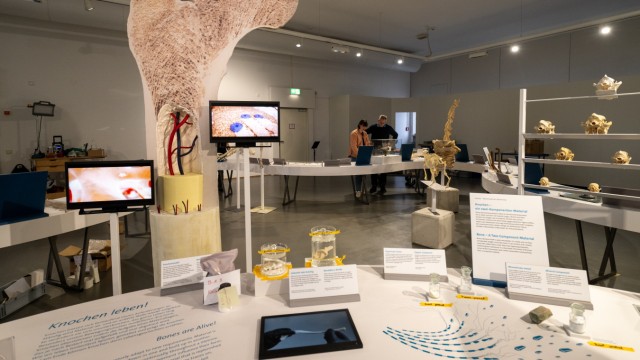
The second room is a laboratory, this is about medicine, chemistry and technology.
(Photo: Catherina Hess)
While the first, dark room is more of a chamber of wonders of wonder and learning, the second room surprises with a shiny white laboratory atmosphere. There are small, hands-on experiments there: How heavy is a bird bone compared to that of a pig? What movements are used to build bone mass? Can I stand on one leg like a flamingo?
This is more about chemistry, medicine and technology. It is clearly explained what bones are made of, how it is that they are both pressure-resistant and elastic and why broken bones heal. “Bones are alive,” explains Michael Apel in front of the huge model of a human arm, “they constantly adapt to the load and renew themselves every ten years.” At this point, at the latest, you will understand that regular exercise and strength training make sense. Cross sections of young, vital and old porous bones clearly demonstrate the difference. You can test your knowledge about the effects of different sports in a guessing game.
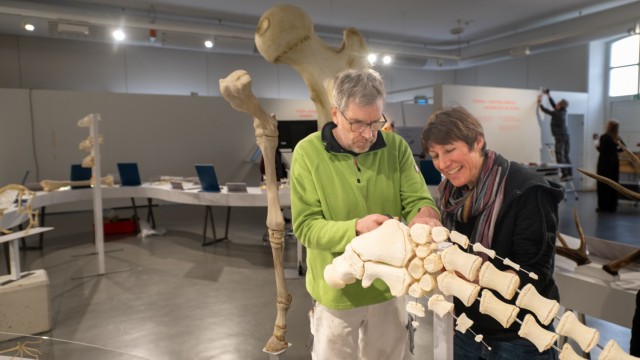
Taxidermist Dieter Schön and designer Monika Waigand check whether everything is in the right place.
(Photo: Catherina Hess)
Medical technology is studying the human body more and more closely in order to artificially replace disturbed functions. Metal sponges from the 3D printer serve as bone replacements. And if you place your forearm on a sensor and form your hand into a fist, a prosthetic hand is controlled solely by this muscle contraction. But design, architecture and aircraft construction also take nature as their model. An Airbus part is on display, designed based on cancellous bone, the microstructure of human or animal bones. An exhibition where you can marvel, learn and play.
Until April 2025, Museum of Man and Nature in Nymphenburg Palace, Tuesday to Friday 9 a.m. to 5 p.m., Sundays and public holidays 10 a.m. to 6 p.m., www.mmn-muenchen.de.

